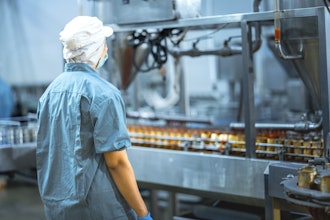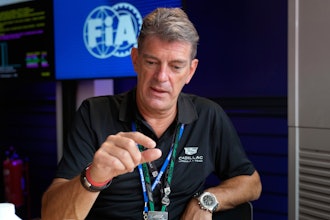This spring, students from Magee Elementary School in Wisconsin were working on a class project. The class was learning code and, as part of the lesson, they built a robot and wrote a simple code that was capable of following a line on the floor.
At the same time, engineers at Farris Automated Systems, a company that specializes in building custom machine systems, were building an automated guided vehicle (AGV) that functioned much the same as the robot in the class project. The AGV was designed by BRP, a company that is known for designing, developing, and manufacturing powersports vehicles. The AGV used sensors to follow lines taped on the floor, used RFID to turn, and had safety failsafes, such as a scanner that shut down the vehicle if anyone (or thing) crossed in its path. Now, it just so happened that Mark Johansen, the president and an engineer at Farris, had a daughter in the class at Magee Elementary.
Johansen saw this as an opportunity to teach the students a little bit more about engineering, and coding in particular. It was a chance to show the class a real-world application, so he invited them out to his shop for a field trip with the added caveat that the students were going to make their own fidget spinners.
The visit was split up into four stations. At the first station, a mechanical engineer explained how he created the model for the fidget spinner in Solidworks, and while he used a different type of code, it was similar to the code they were learning about at Magee. At the second station, Johansen discussed how important coding was to Farris, and how it fit into the business. The third station featured the AGV as well as a machine vision demonstration in which the kids could see the code that was operating the AGV on a laptop. In the final station, the kids learned how a piece of code could turn into what is most possibly the world's most durable fidget spinner.
The code was used to cut the parts from an Aluminum plate on a Haas VF-2 vertical machining center, and then drill a few holes. The kids used a small arbor press to push three dowels into the spinner while the Farris Engineers used the same press to place the bearing in the spinner's center.
They made about 55 fidget spinners at Farris that day and it served as a great example to kids who far too often ask, "Well, how am I going to use this in the real world." You'll use it alright, if anything to make the most durable fidget spinner that I have ever seen.
This is IEN Now with David Mantey.




















